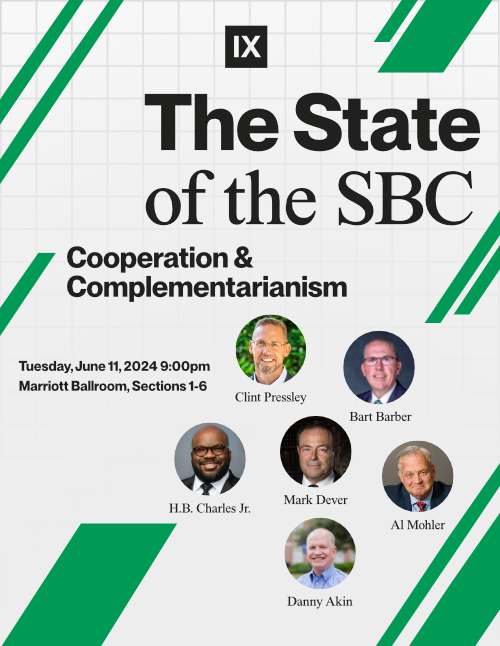Book Review: How to Lead When You’re Not in Charge by Clay Scroggins
Scroggins, Clay. How to Lead When You’re Not in Charge: Leveraging Influence When you Lack Authority. Zondervan, 2018. 240 pages.
Leadership styles vary according to the needs of different organizations. Leading a tech company, for instance, differs from leading a battleship. Battleship commanders likely don’t follow J. Oswald Sanders’ Spiritual Leadership or Timothy Witmer’s The Shepherd Leader. Similarly, secular books on leadership theory may offer only scraps for pastors compared to Sanders’ and Witmer’s contributions to church leadership. In other words, no book on leadership satisfies every type of leadership.
What about those longing to lead but have yet to do so? Clay Scroggins’ new book, How to Lead When You’re Not In Charge: Leveraging Influence When You Lack Authority, takes this different angle. Scroggins focuses on helping people learn to lead even when they’re not formally in charge. Although not clearly stated, he approaches leadership more generically rather than focusing upon local church leaders.
As the lead pastor of Atlanta’s North Point Community Church, Scroggins traces his journey from a lowly intern to senior staff, and finally, to campus pastor in Andy Stanley’s network of multi-site churches. Often self-effacing, humorous, and ever-nodding to Stanley as mentor, he prods would-be leaders into exercising leadership where they are instead of waiting to be elevated to the top of the organization. Scroggins explains, “influence has always been, and will always be, the currency of leadership.” Or as he states elsewhere, we should avoid confusing “having authority with the responsibility to lead” (29). Along the same lines, Scroggins helpfully notes that titles do not make leaders (31). So instead of waiting for someone to bestow a title, leaders-in-waiting must learn to lead where they are. The question remains: how?
A Challenging Challenge
Scroggins divides the book into three sections. The first, “Understanding our Challenge,” proves more autobiographical than principled. Scroggins attempts to identify with readers of all backgrounds. His long experience in student ministry bleeds through on occasion, with statements aimed to cheerlead readers that they really can lead. For instance, “All human beings have a measure of leadership loaned to them. . . . Not only is it in you to lead but it is possible for you to lead well!” (36) Those comments seem to stretch the concept of leadership beyond reasonable boundaries.
Also, throughout this section I questioned some of Scroggins’ occasional interpretations of Scripture. For instance, Scroggins interprets Romans 12:3 individualistically without recognizing that the context emphasizes the body of Christ and each member’s relationship to it ( 47–48).
Scroggins also seems to bend Scripture so that it focuses on psychotherapy and psychological identity. He comments, “the most important ongoing conversation you have in your life is the one you have with yourself every day” (48); “The degree to which you understand and feel a purpose for your own life will affect the degree of security you have in your identity” (53); “We decide what’s most important about who we are” (54). He then identifies “two truths” that have most impacted his “identity.” The second has to do with God’s love and Christ’s death for him—an obviously critical truth for any believer to stand on. But the first stretches beyond any biblical foundation: “1. Because I have been created in the image of God, I am a chosen child of the King” (54; italics added). Humanity’s creation in the image of God follows clearly from Genesis 1:26–27, but no Scripture equates divine election (which one must assume he means by “a chosen child of the King”) as part-and-parcel with the imago Dei.
The Four Behaviors
The second and most helpful section, “The Four Behaviors,” identifies four practices Scroggins believes are necessary for leadership: lead yourself, choose positivity, think critically, and reject passivity. In discussing “lead yourself,” Scroggins calls for monitoring one’s heart and behavior. He provides some useful diagnostic questions that get at the inner motive, frustrations, and discovery of blind spots (102–103).
Despite his labor at shedding the “power of positive thinking” ideology, even calling it “a self-delusion that ignores reality” (128), he doesn’t quite accomplish his goal when discussing “Choose Positivity.” Certainly we should welcome and strive for positive attitudes. But Scroggins stumbles into Schuller-esque territory when he writes, “When these powerful truths [referring to positivity] become the foundation for how you see, you can do the inconceivable” (128, italics added). He attempts to recover ground when he calls for humility, trusting God, and patience in the process—qualities necessary in Christian leaders—but leaves the reader juggling to balance how these qualities fit together in light of earlier comments (134–135).
The best statement in Scroggins’ “Think Critically” chapter is simple and on target: “Every good leader is also a critical thinker” (141). He adds that critical thinkers are also learners who notice things about themselves and connect problems with solutions (141–142). With that said, readers with a robust ecclesiology will find his ecclesiological examples in the chapter lacking critical thought. Instead of recognizing generational diversity in the body of Christ as healthy, he upholds his organization’s focus on launching a “twenty-somethings” worship service as an example of positive critical thinking. Yet this approach prevents twenty-somethings from the benefits of multi-generational experience and wisdom in living the Christian life, observing the practice of life-tested godly marriages, and watching healthy models of Christian parenting beyond preschoolers. That narrow view of Christian corporate life will lead to myopic approaches in living the demands of the gospel. The twenty-somethings need corporate life with the sixty and seventy-somethings too.
Making His Point
The final section, “Challenging Authority,” explains how to navigate the sometime awkward path of thinking and acting like a leader instead of remaining trapped by a title. Scroggins helpfully reminds his readers that “great leaders don’t get defensive” (182). Often in the early years of pastoral work I spent far too much time defending myself instead of listening. I certainly identified with Scroggins’ honesty at this typical leadership mistake.
The last two chapters provide more counsel for working in a boss-employee relationship with the aim of emerging into a leadership role. Readers will find most of Scroggins’ comments to be practical and effective. He writes, “chances are, if you wait to start leading, you will never be put in a position to lead anyway,” so start leading before wearing the title. Additionally, he wisely states, “Your reputation matters,” so “whether you’re in charge or not” how you work and the attitude you show forms your reputation now (222; author’s italics).
Is This a Go-to Book?
I appreciate Scroggins’ encouragement to emerging leaders to work diligently and lead faithfully at whatever stage they find themselves rather than waiting for the choice title to really begin to lead. For those working in businesses or tech companies or industries, this book may prove to be a valuable aid toward preparing for leadership roles.
I would not, however, make this a go-to book for pastoral interns or ministry team members who desire to serve as lead pastors. That’s not to say that there were not some great ideas and counsel sprinkled in the book. But this volume is certainly not a recipe for faithful local church leadership or pastoral leadership. Plus, the strained interpretations of a number of biblical passages and the presumption that everyone can be a leader does not fit well with those involved in local church ministry.
While it is certain that Scroggins’ book will get wide readership, particularly with his wealth of experience in the North Point church community, and while he carves out a niche in leadership material by writing for the not-yet leader, I think the book fits best outside of local church leadership structures. Of course, a would-be church leader will find a few useful ideas to consider. For church leaders, however, I would recommend looking elsewhere.








